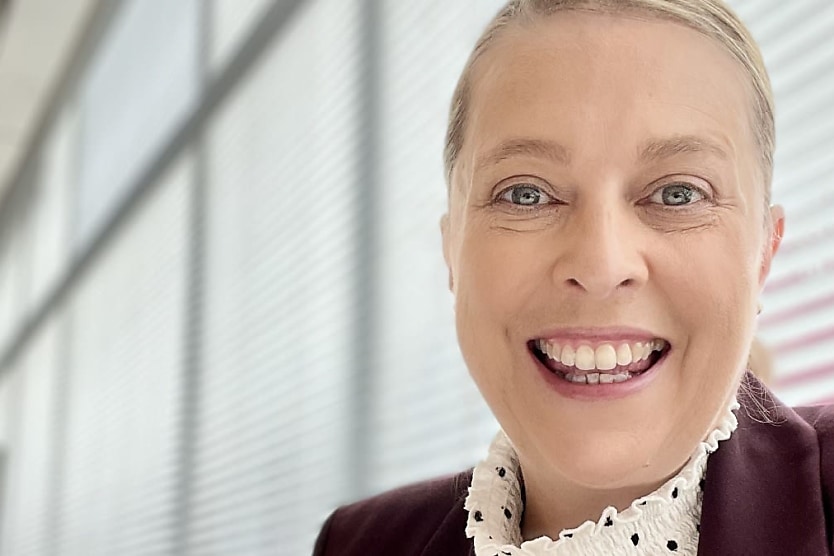Maintaining connection in remote work settings is the key to wellness
SHARE THIS ARTICLE

Keeping company culture flourishing in a remote work setting is no small feat. There may be a golden ticket to assist in all of this, however, and it lies in connection.
“How are the employee voices heard when the faces aren’t seen?” This was the question posed by oVice’s chief human resource officer, Megan Reed, in a recent episode of The HR Leader.
It’s no secret that the massive rise of remote and hybrid working has become a popular option for workplaces. However, it hasn’t come without cost, as company culture sees a hit.
Without the face-to-face interactions that culture thrives on, it’s hard to maintain. While it may be more difficult, it’s not impossible. According to Reed, fostering connection is the key to maintaining wellbeing
“It’s the connection piece that is going to link us back to wellbeing. A culture of connection is what’s being proven [beneficial] to really focus on. Let’s choose isolation and loneliness. That’s one of the big fears that a lot of people have when they’re talking about enabling a hybrid or a flexible workforce. There is a concern that people who are physically separated from their colleagues, from management, from head office, will suffer from isolation and loneliness,” Reed said.
Further than keeping employees happy and engaged, leaders have a duty of care to keep staff safe. There are psychological risks that can come from isolating employees, which is why efforts must be made to mitigate this.
Reed said: “Psychosocial safety and our responsibilities in that space have grown just exponentially. That duty of care piece, and for me, the lens that I’m looking through is how do we deliver on that commitment when we are leading teams or supporting organisations that we don’t have the privilege of seeing face to face and seeing on a daily basis?
“How are the employee voices heard when the faces aren’t seen? There are some lenses that we need to look through in the modern-day work of an HR practitioner or a business leader. So, when I think about wellbeing and through the lens of a remote leadership capacity, I think it’s really important to understand what we’re trying to achieve by wellbeing.”
“My favourite definition that I found has actually been the ability for each of us to be able to be the best versions of ourselves, to be able to show up as that best version. I’m not a health practitioner; I’m not a psychologist. I’m a student of life and a student of leadership, and so these areas are of great interest to me. And I find it quite fascinating that we all wish to be able to show up as the best versions of ourselves, both at work and in life.”
According to Reed, wellness is the “fastest-growing industry worldwide”. Despite this, many are struggling. In fact, a Gallup study revealed that less than a quarter (24 per cent) of employees strongly agree that their organisation cares about their wellbeing.
Reed said: “There’s so much information at our fingertips … but we’re still not achieving it, even when we’re seeing each other face to face. So how do we then work on that when we don’t have the privilege of seeing people on a daily basis?”
Setting boundaries may be a worthwhile venture for leaders and employees. The lines of what constitutes a workday have become blurred in remote and hybrid settings, and according to an AHRI study, 53 per cent of flexible workers across Australia work flexible hours, too.
Despite this, leaders aren’t properly trained on managing remote teams, with the same AHRI report noting that just over a third (34 per cent) of organisations have provided training to line managers on managing remote or hybrid working.
“So, the concept of boundaries, when people are working from a remote location, working from home, that’s a hot topic in itself. How do we support people to set boundaries that are healthy for them but allow them to still deliver meaningful work and have the opportunity to develop skills, develop their careers, and develop their impact? How do we find that balance between the boundaries and the development?
“When we’re thinking about wellbeing and setting boundaries, our responsibility is overarching. As leaders, as business owners, as HR practitioners, our responsibility and that duty of care, it feels like there is no start and end point. Wellbeing seems to always focus on the individual. Most of the programs that we talk about as HR practitioners are focused on the individual, and we need these; there is absolutely no doubt we need these programs,” Reed said.
“But one of the things that we can actually do that potentially has more impact is to start focusing on the environment. It’s the social, cultural and physical environments that we’ve created that start to drive wellbeing choices. And so those social, physical and cultural environments, of course, include where we live, but where we work.”
The transcript of this podcast episode was slightly edited for publishing purposes. To listen to the full conversation with Megan Reed, click below:
RELATED TERMS
In a hybrid work environment, individuals are allowed to work from a different location occasionally but are still required to come into the office at least once a week. With the phrase "hybrid workplace," which denotes an office that may accommodate interactions between in-person and remote workers, "hybrid work" can also refer to a physical location.
Professionals can use remote work as a working method to do business away from a regular office setting. It is predicated on the idea that work need not be carried out in a certain location to be successful.
Jack Campbell
Jack is the editor at HR Leader.

